Les peintures de Corin Caleb Vanden Berghe sont essentiellement figuratives, bien que parfois, ou à certains endroits, des échappées abstraites émergent. Il y a toujours une idée fondamentale autour de laquelle la peinture est structurée, mais l'image proposée permet plusieurs niveaux de lecture.
Souvent, la toile a plusieurs significations. Parfois aucune.
Les couleurs, les lignes, l'harmonie et le chaos, la clarté de l'image, ainsi que sa dissimulation, font partie de ses explorations picturales.
Ces dernières années, son travail s'est concentré sur l'architecture brutaliste et moderniste. Les maisons et les bâtiments représentent des états d'âmes plutôt que de réelles constructions.
Dans de nombreuses peintures, un personnage est placé dans un environnement végétal et/ou architectural, laissant entrevoir la solitude et le manque de sens de notre condition humaine.
Les femmes libres s'alanguissent dans une végétation luxuriante et abondante. Les anges sont également présents, sous la forme de statues, révélant que d'autres dimensions existent au delà des 4 connues. Peindre la 7ème dimension.
Son parcours artistique s'est orienté vers un style qui mélange intrinsèquement abstraction et figuration, en représentant l'espace mental. Peindre l'espace mental où les objets apparaissent. Des œuvres récentes représentent des voitures, servant de métaphores pour nos corps, et se lançant dans une quête de nouvelles dimensions. En même temps, ces voitures symbolisent nos pensées, interprétées ici comme des objets.
Mais sa quête ultime est la profondeur lumineuse. Corin Caleb cherche à exprimer dans chaque peinture une poésie sombre, primitive, et lumineuse.
Sa peinture évolue actuellement vers la recherche du chaos et de l'harmonie, et de l'inquiétante étrangeté. Mais aussi la représentation d'une vision intérieure de la Nature. Avec dans chaque peinture, un lieu de décalage. De dissonance.
THE PLACE FOR MY PAINTINGS

L'INTERNAT
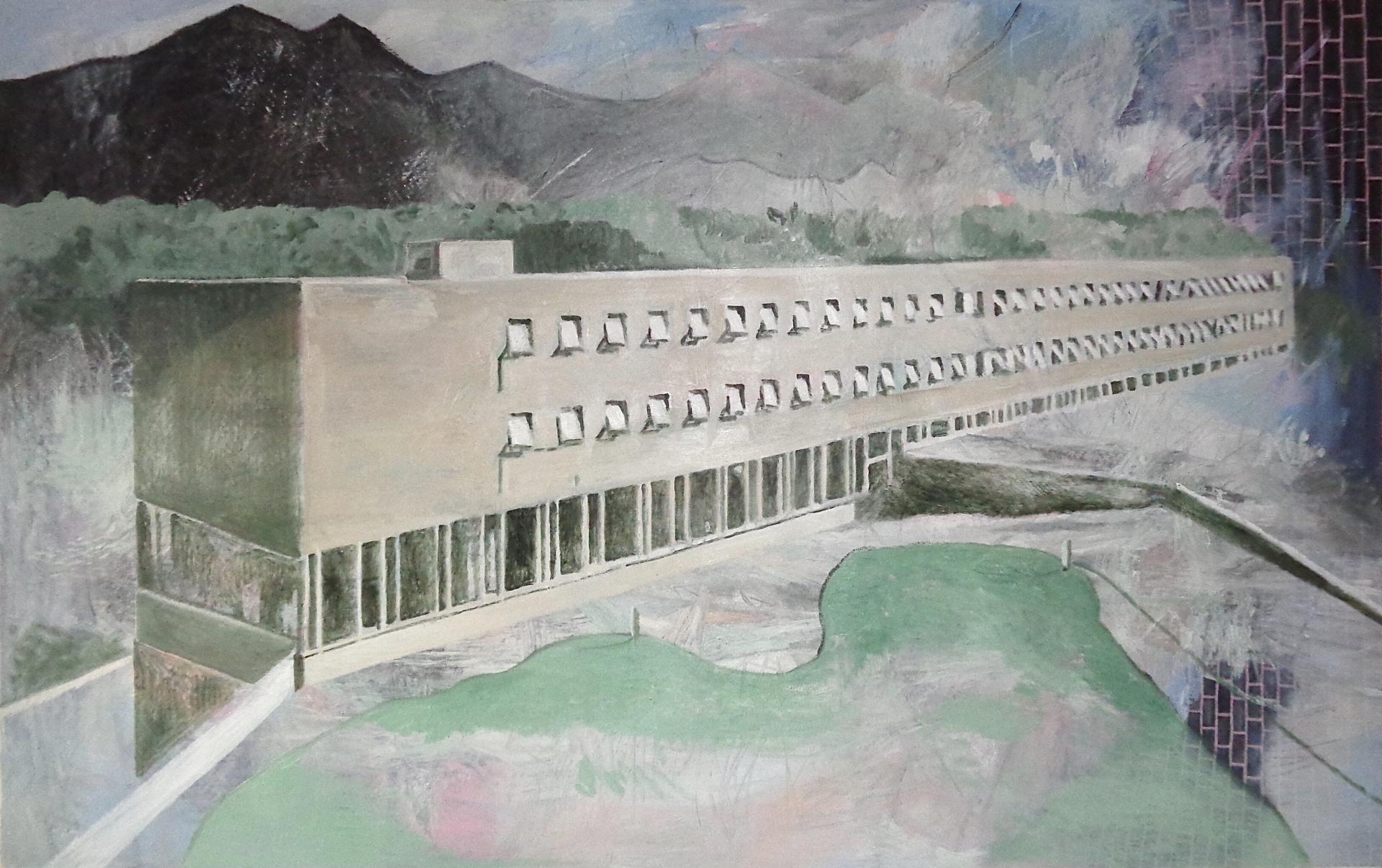
THE KINGDOM OF HEAVEN
LA MÉLANCOLIE
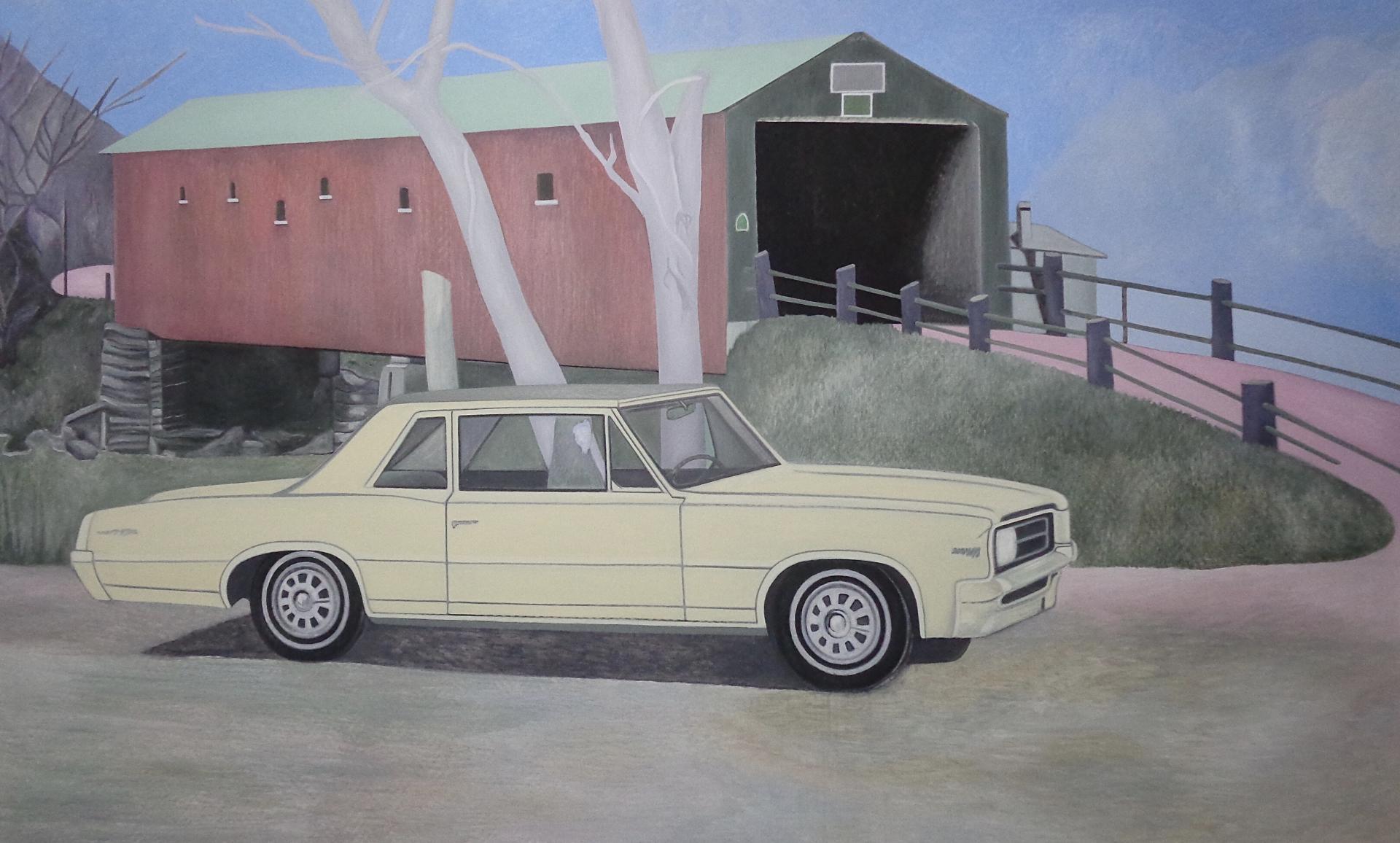
LE NOIR SOLEIL
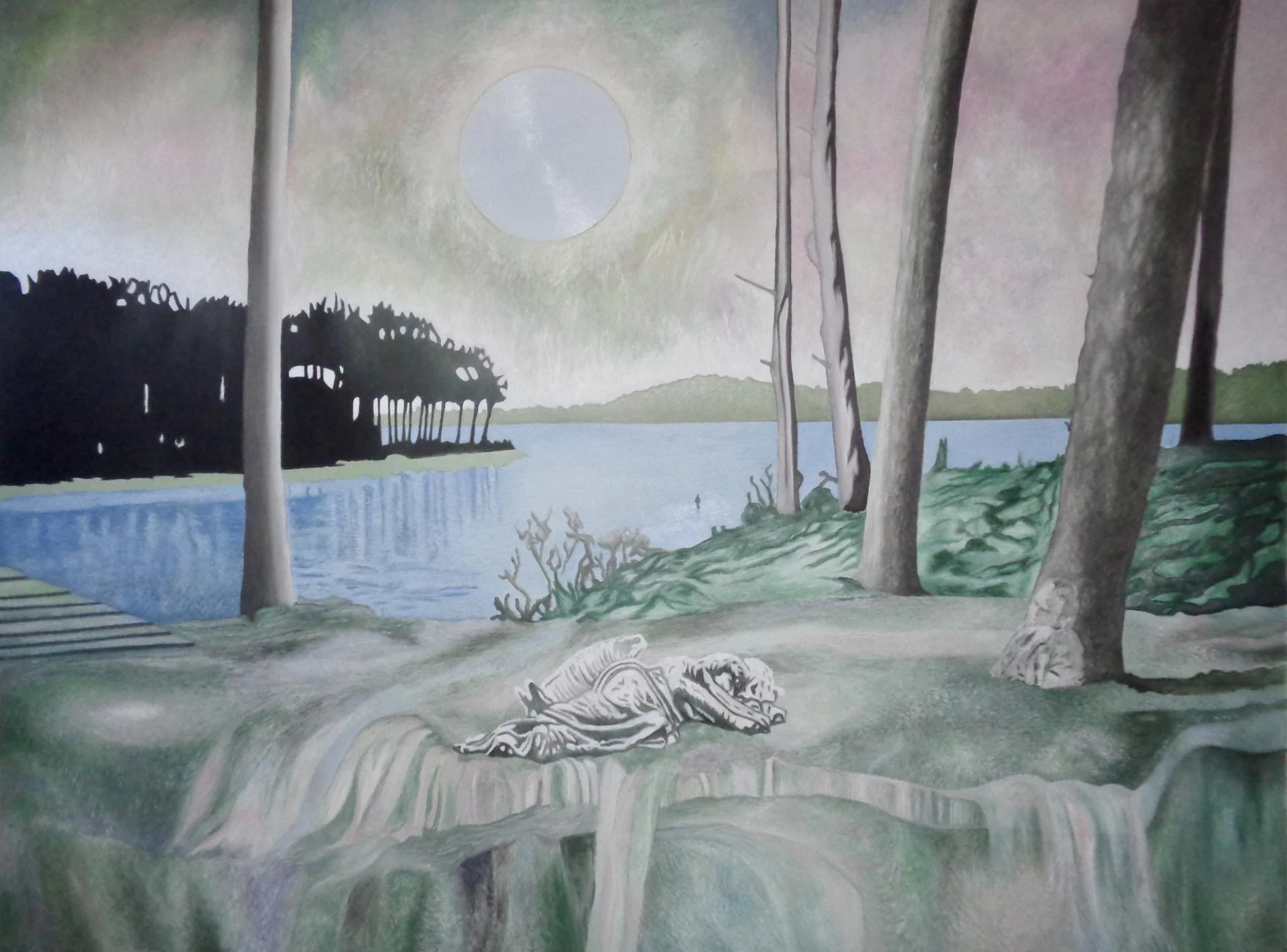
CIEL VERT
GARDE FOU LE NOIR CHEMIN / AU-DESSUS DU VIDE
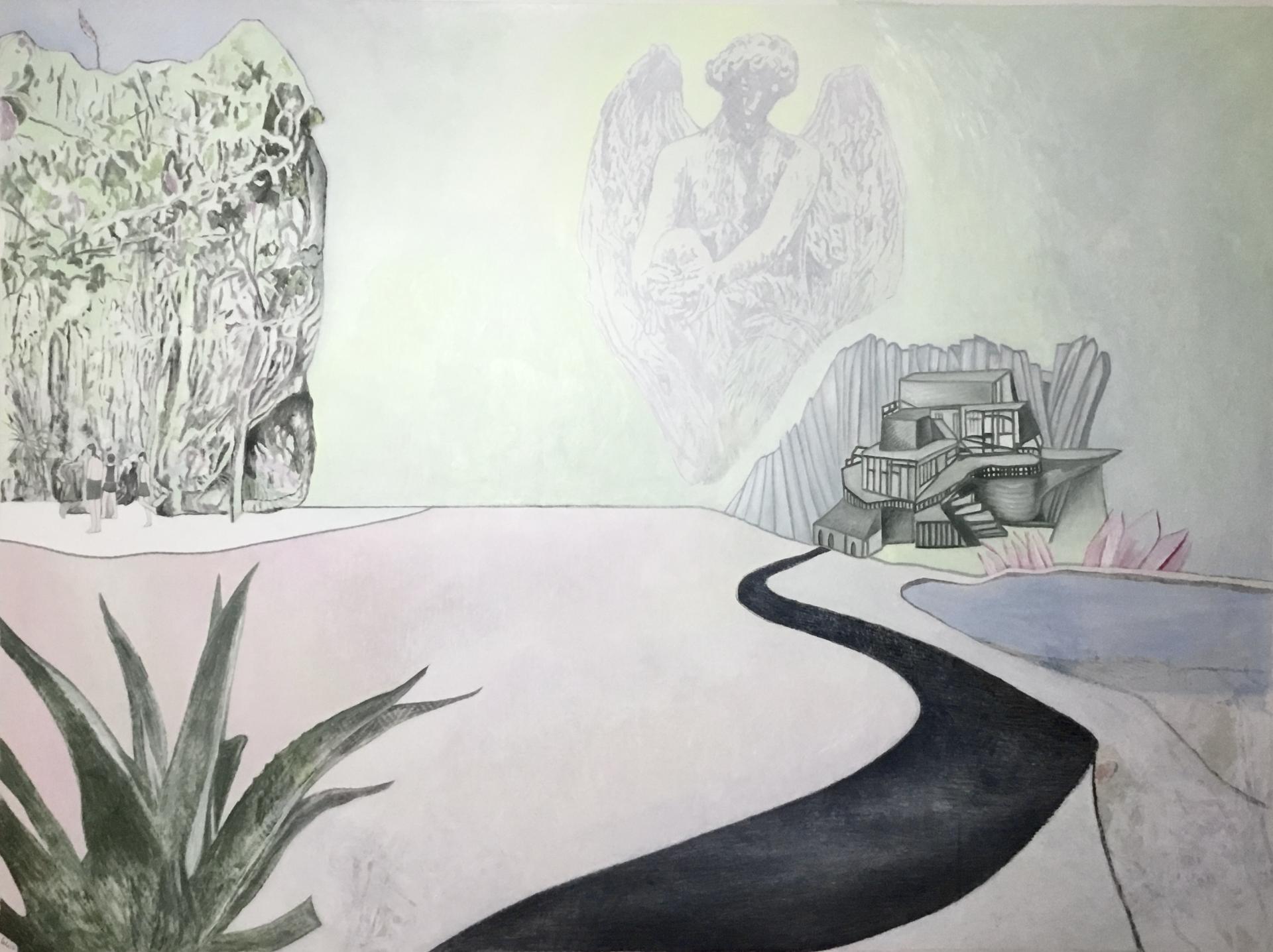
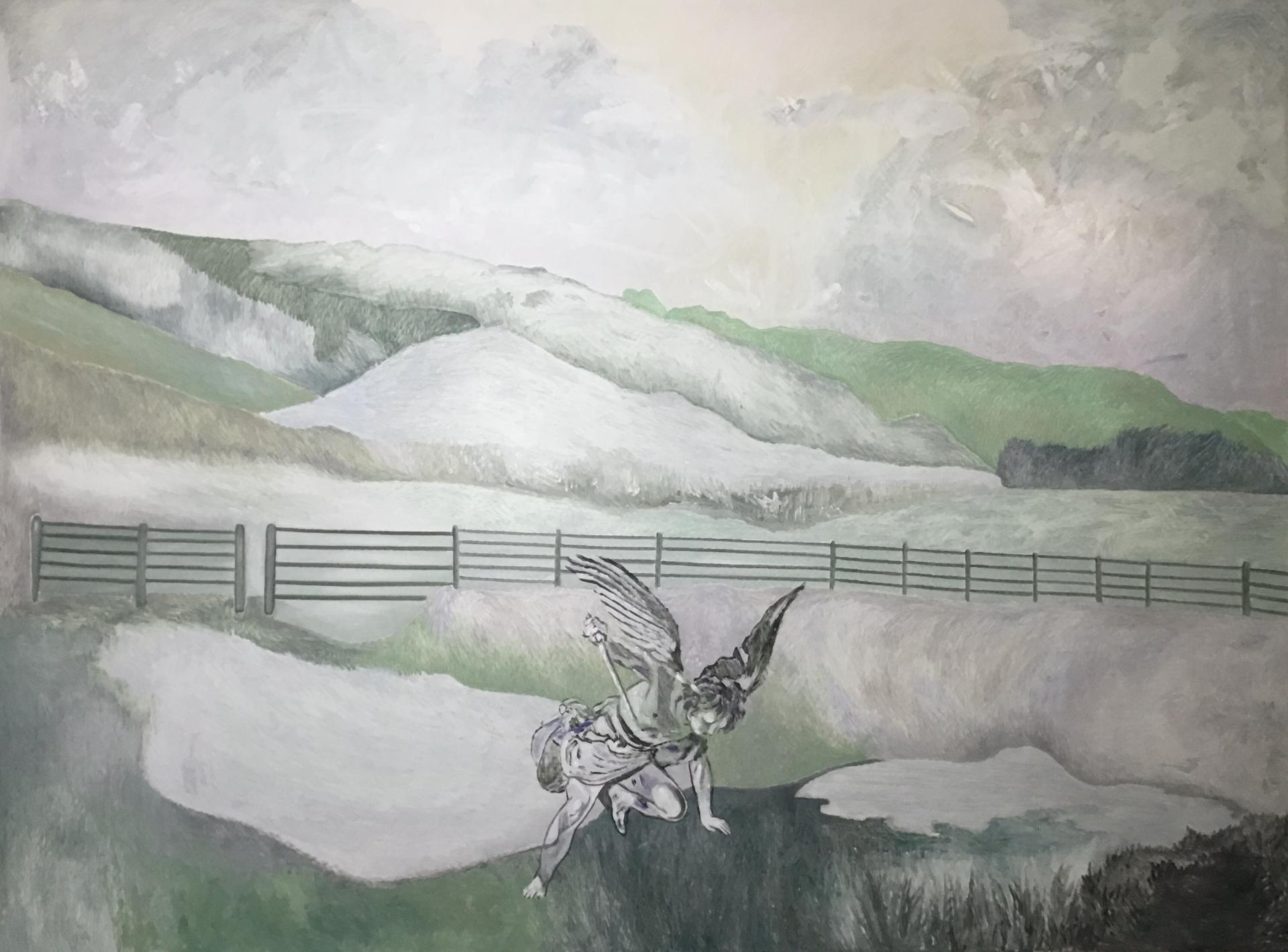
DIMENSION 6
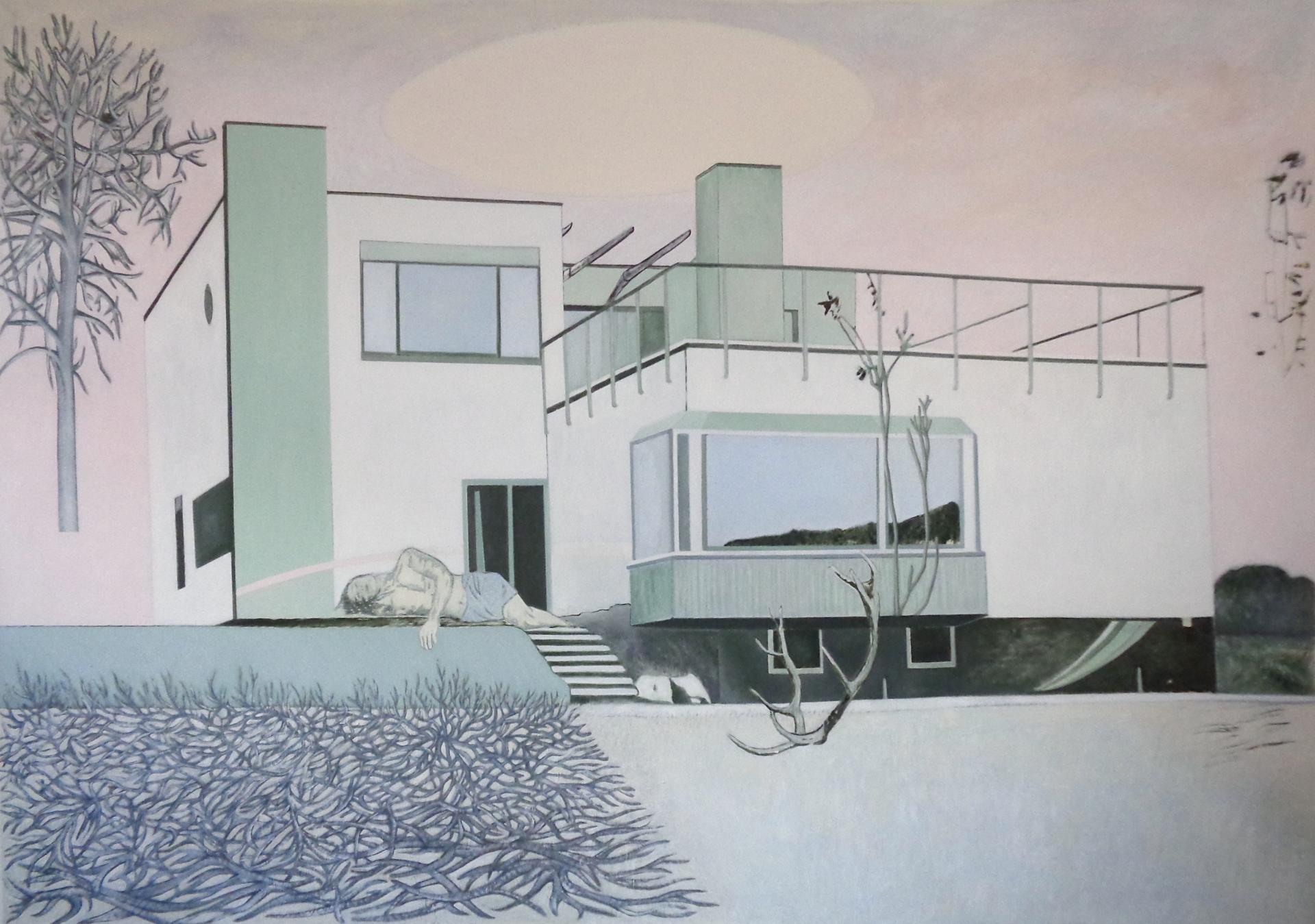
GAMOVER
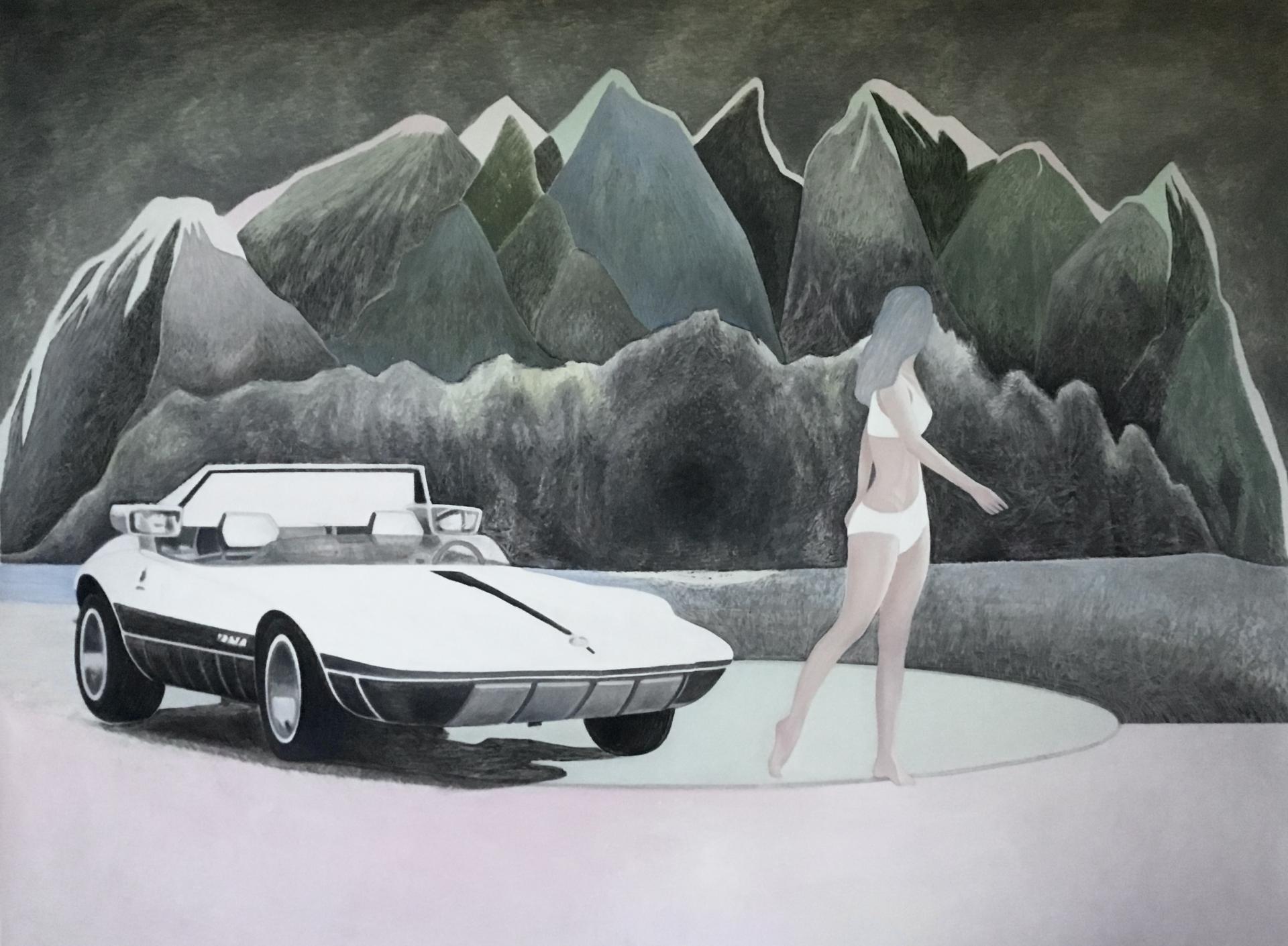
PLUIE
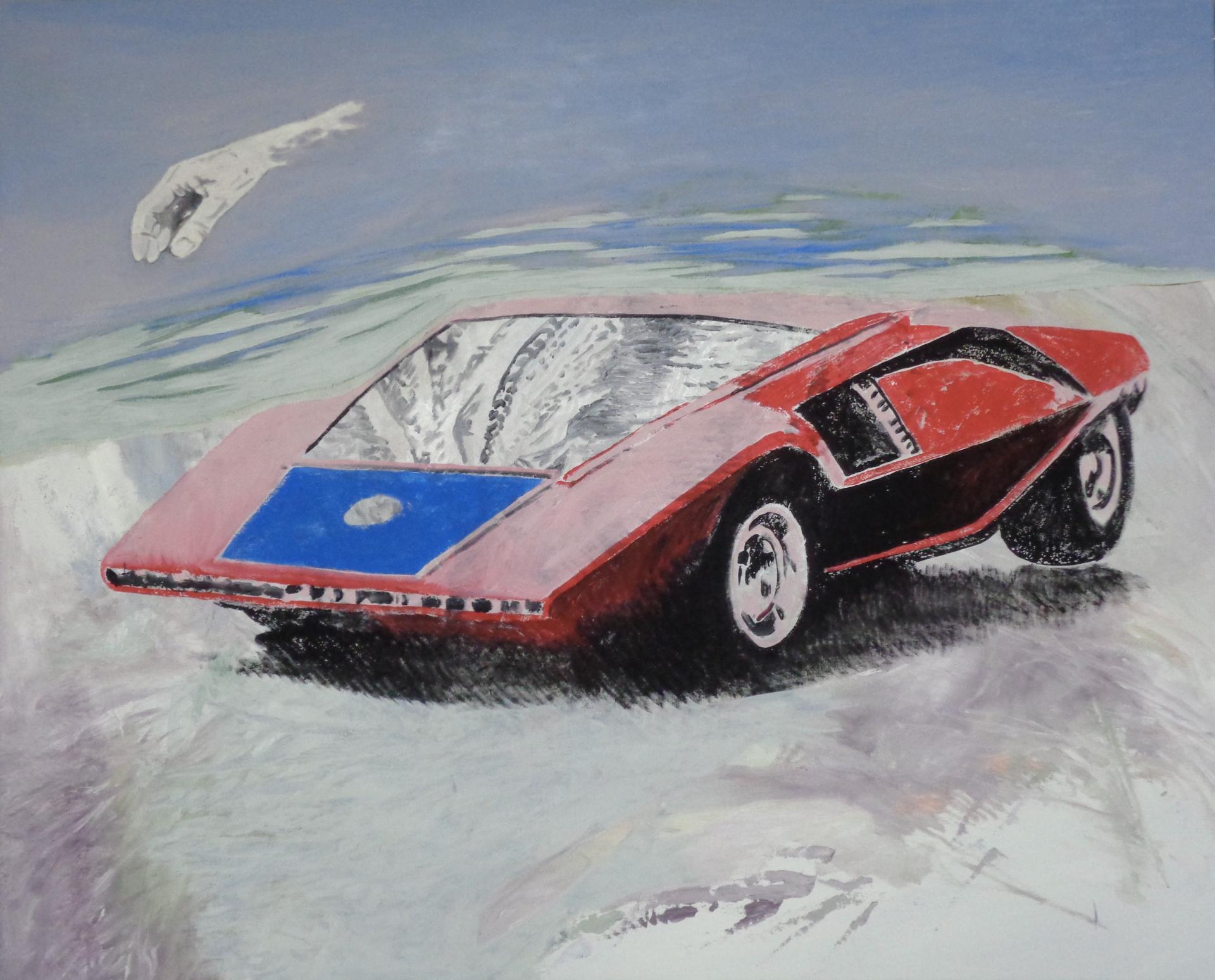
NOIRES MONTAGNES
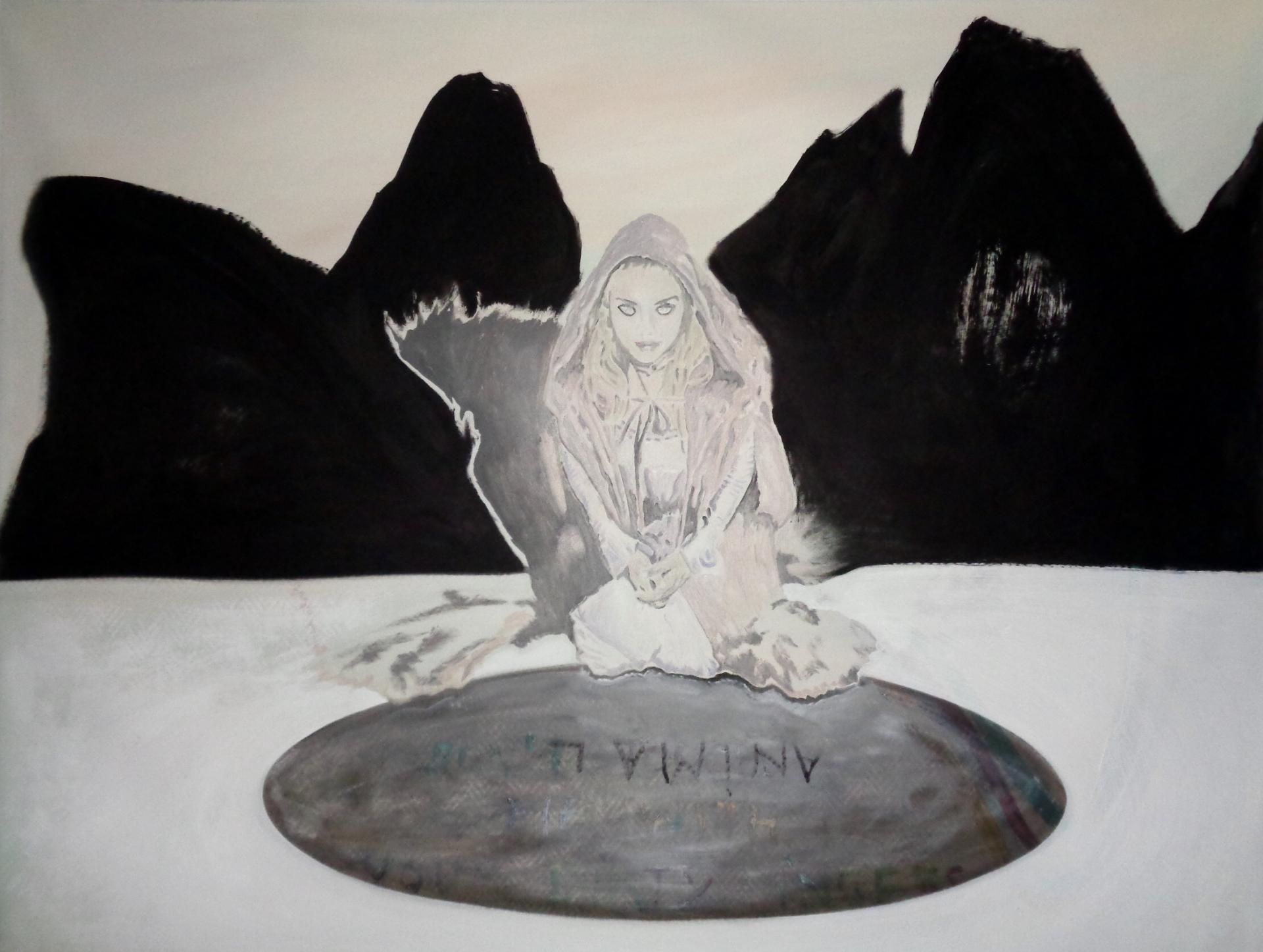
ILLUSION DE LA MELANCOLIE / LOVETOY AU PAYS DES MERVEILLES
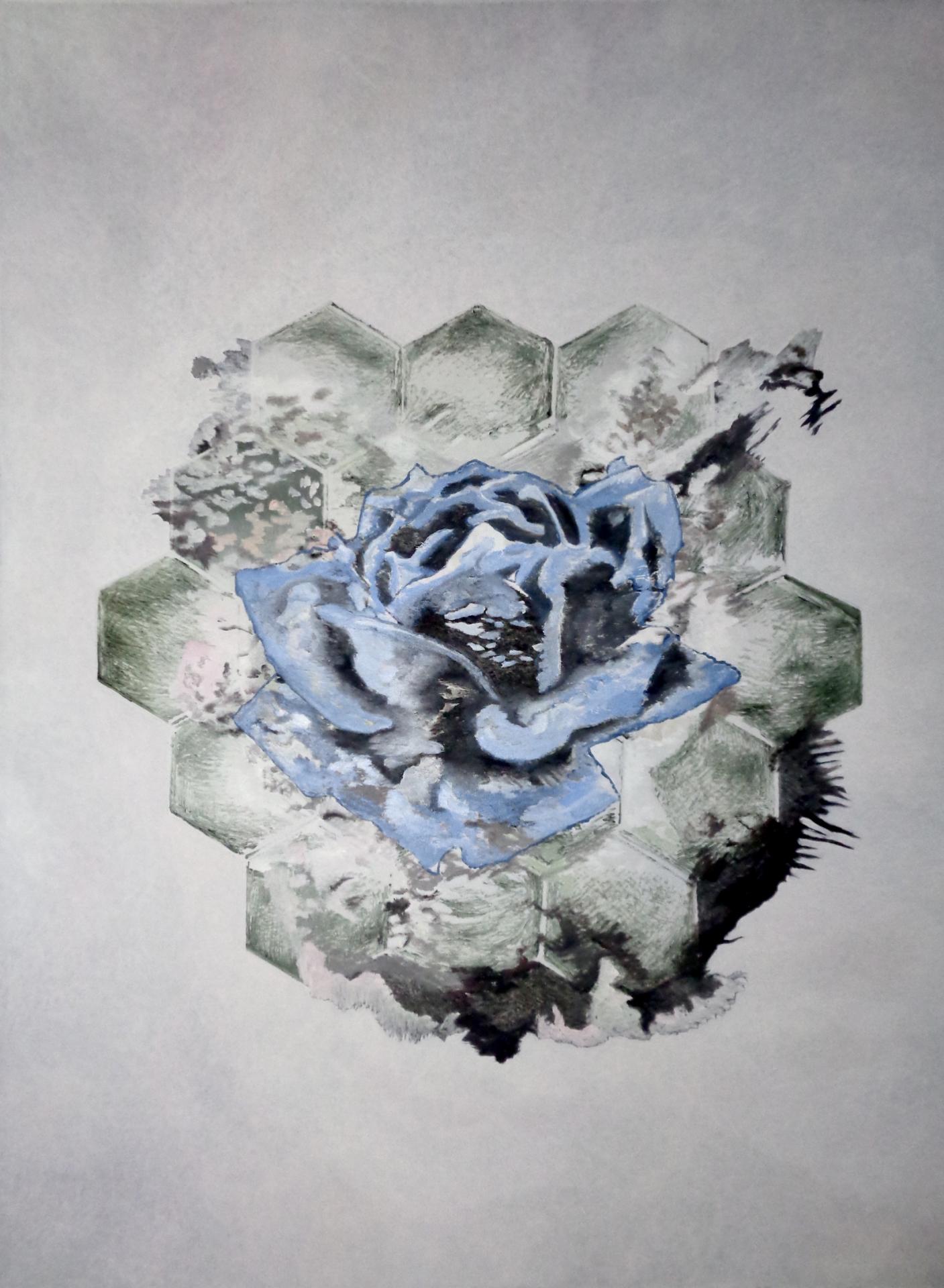
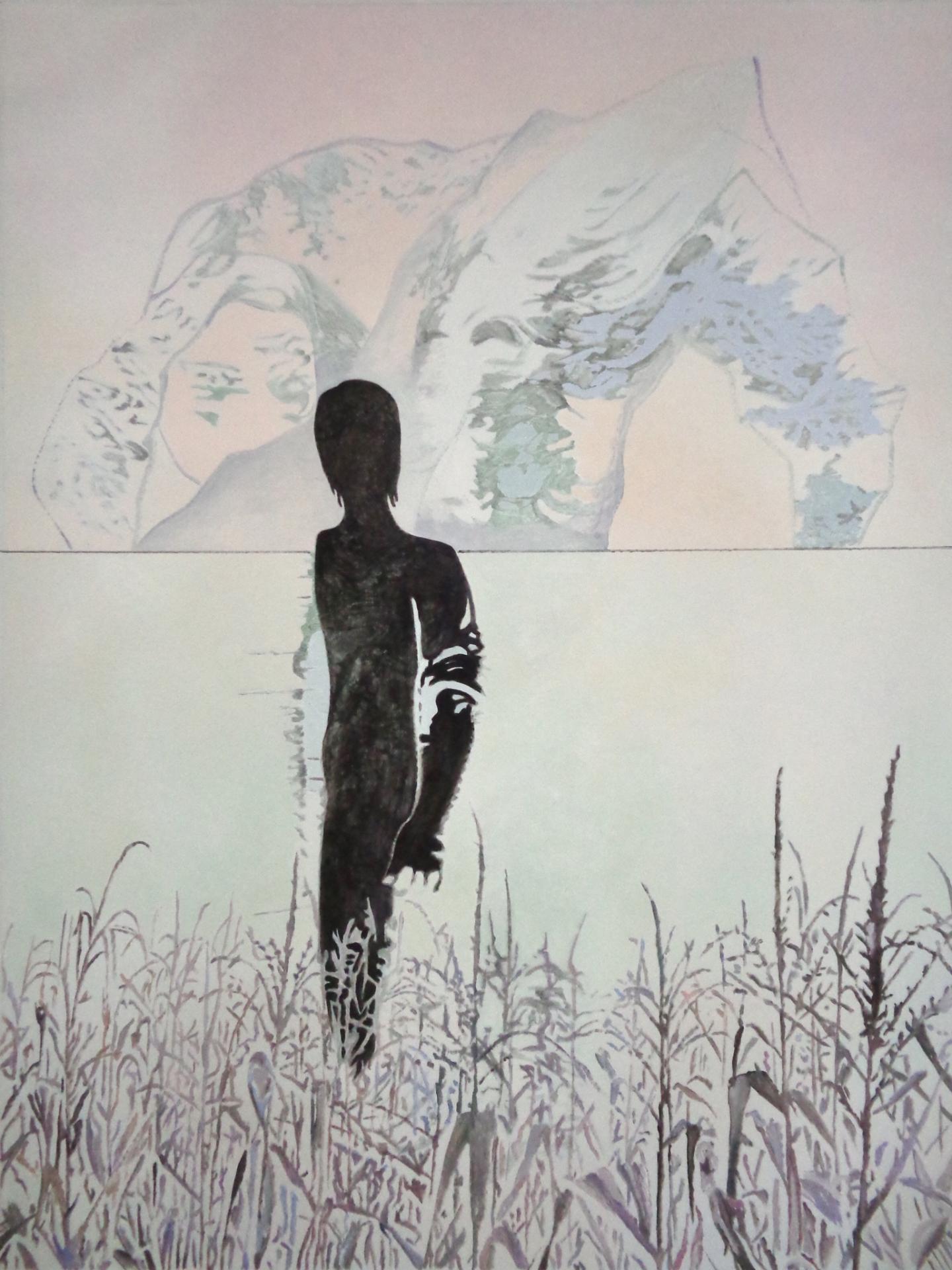
LES DUNES
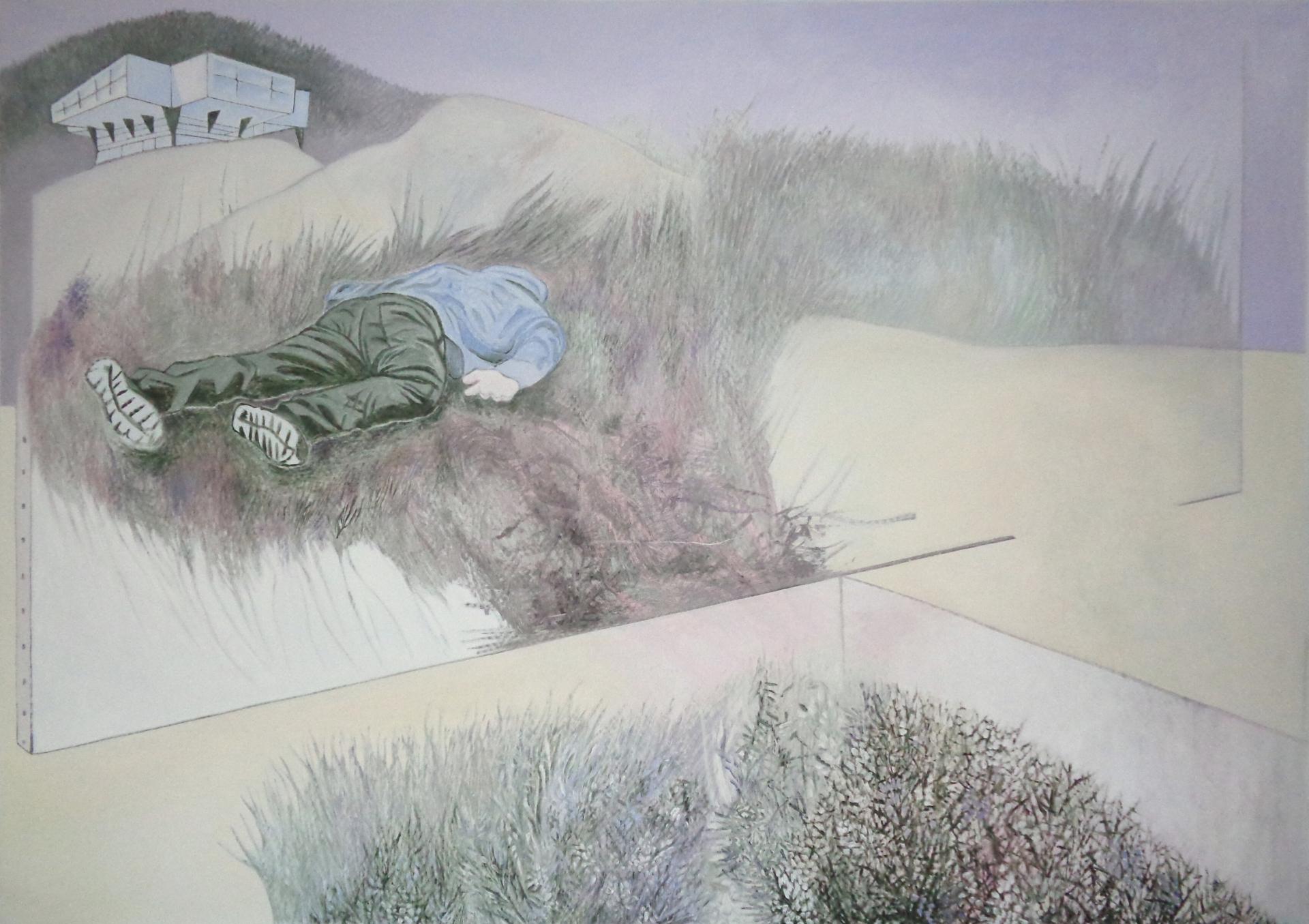
ARE WE GHOSTS ? / SOLARIZED ANGEL
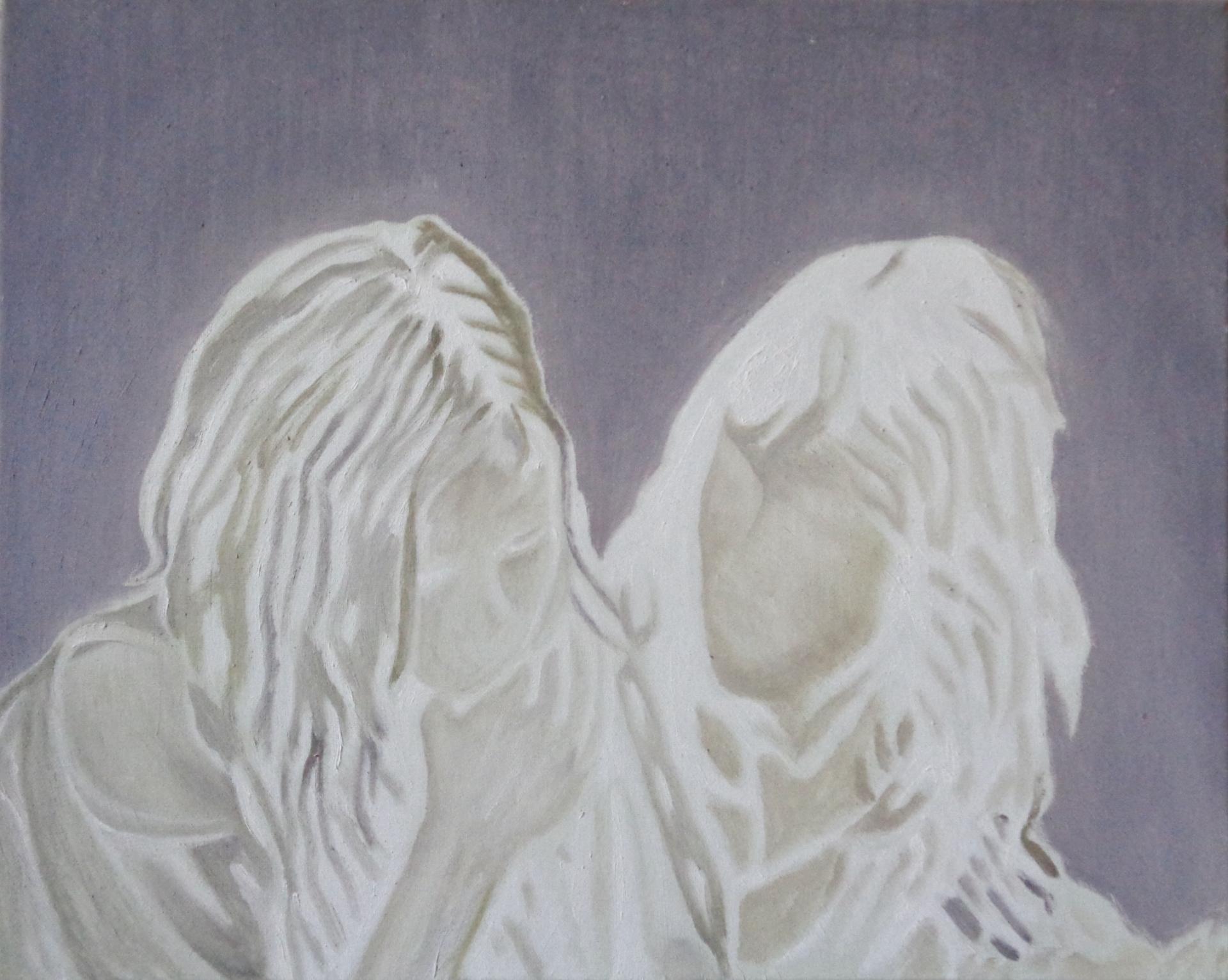
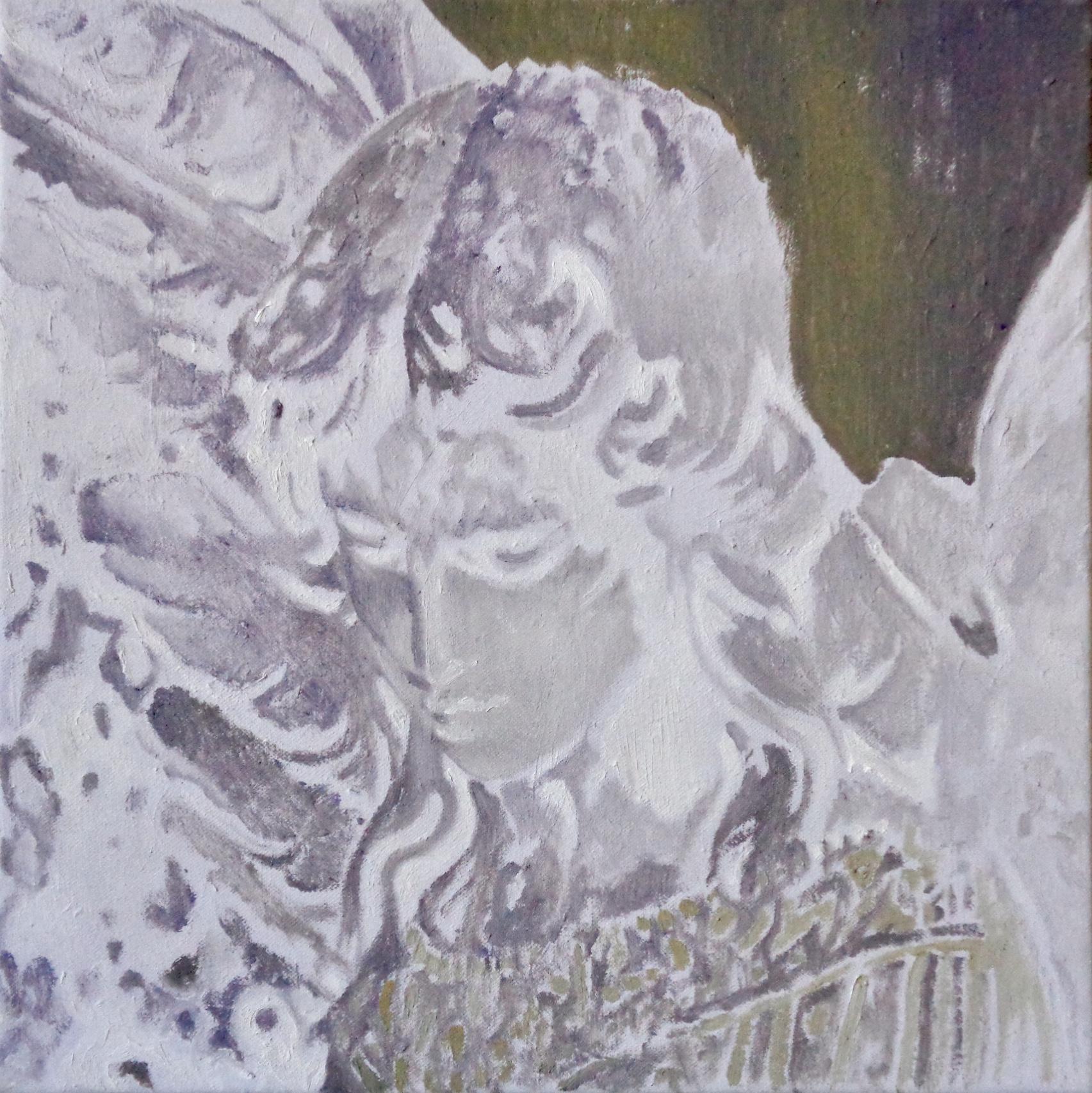
DÉLAISSEMENT
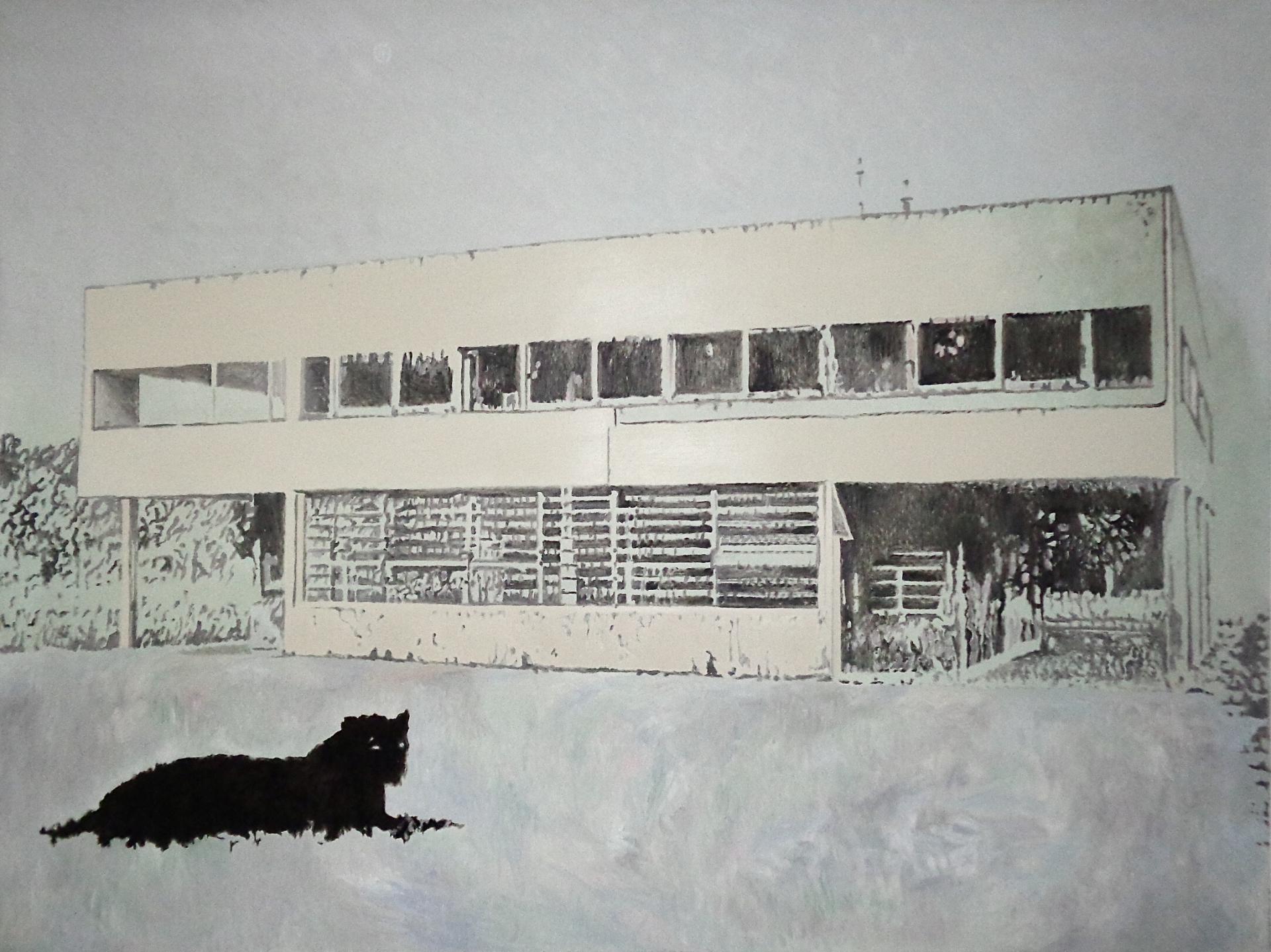
FOURRURE
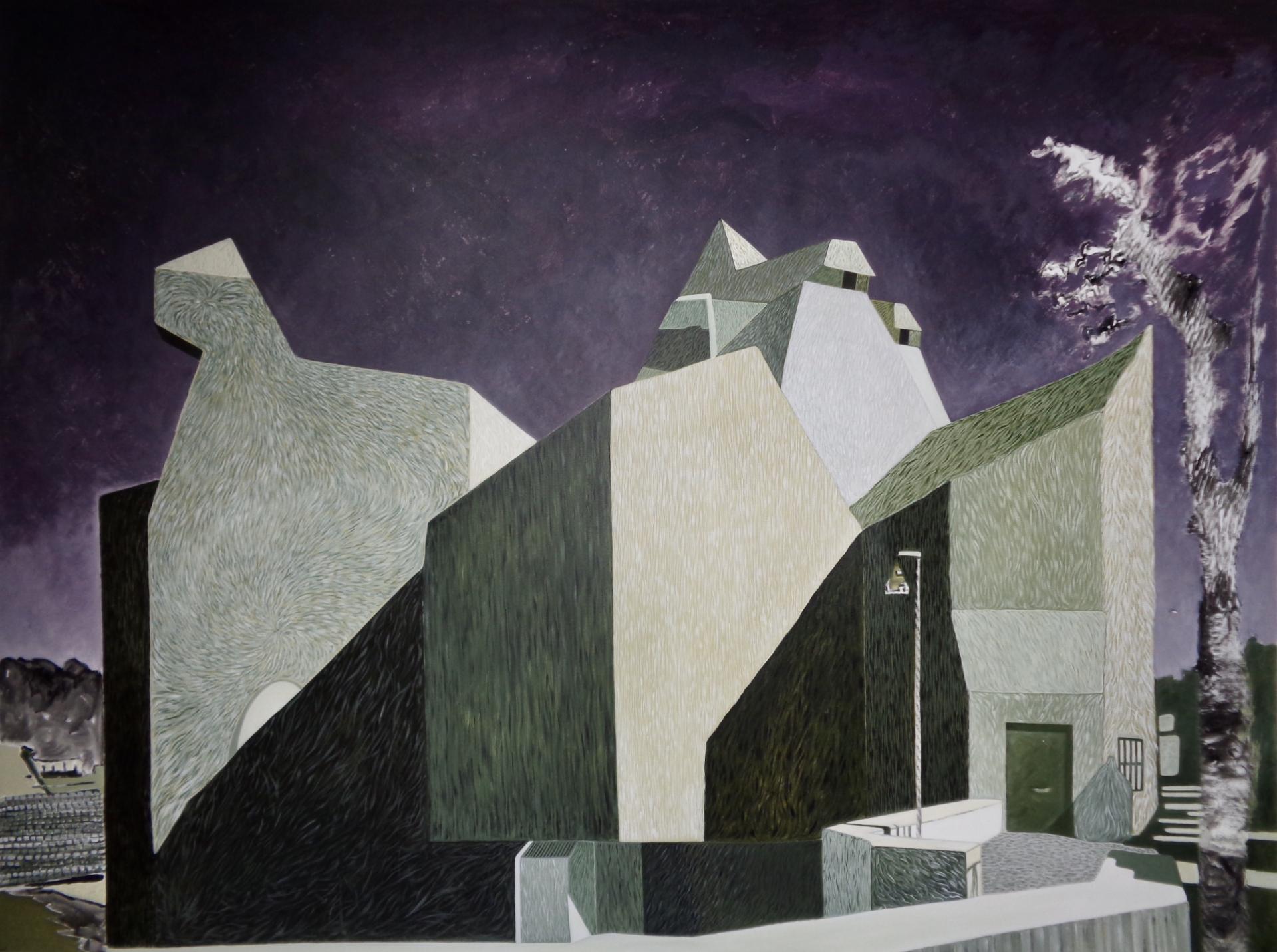
DEMEURE NUE / AU FOND DU JARDIN
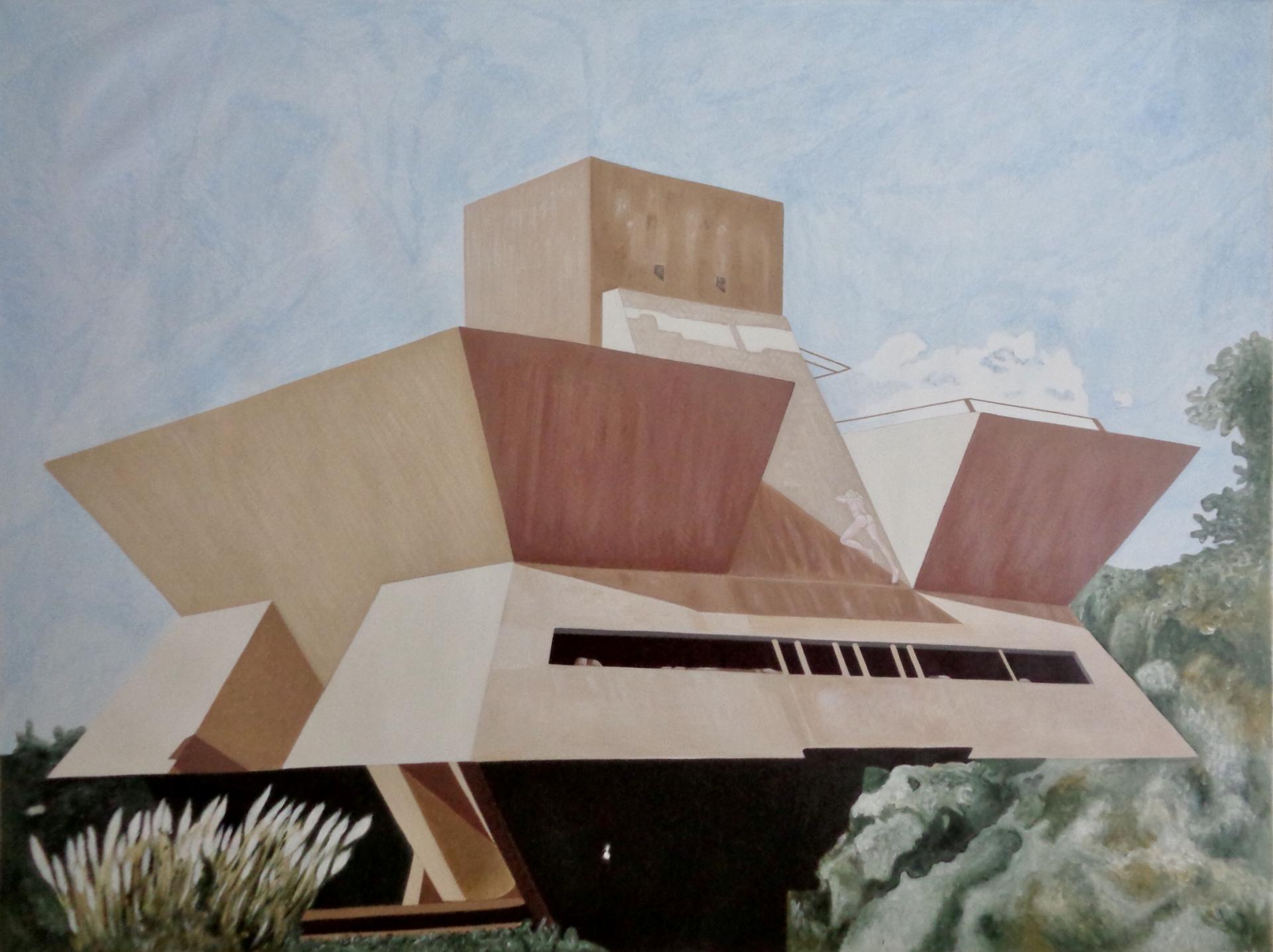
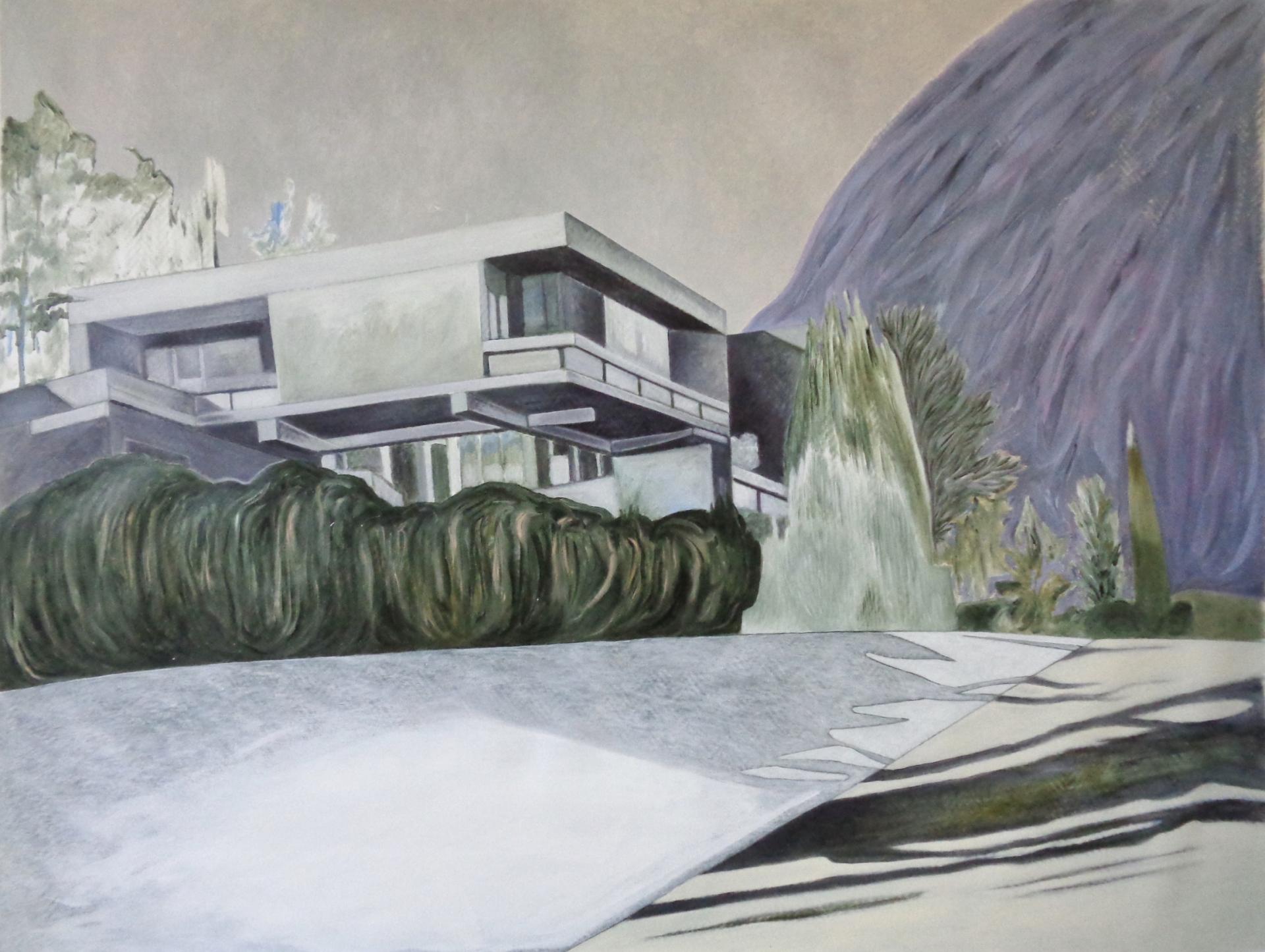
A L ABANDON / STANDALONE

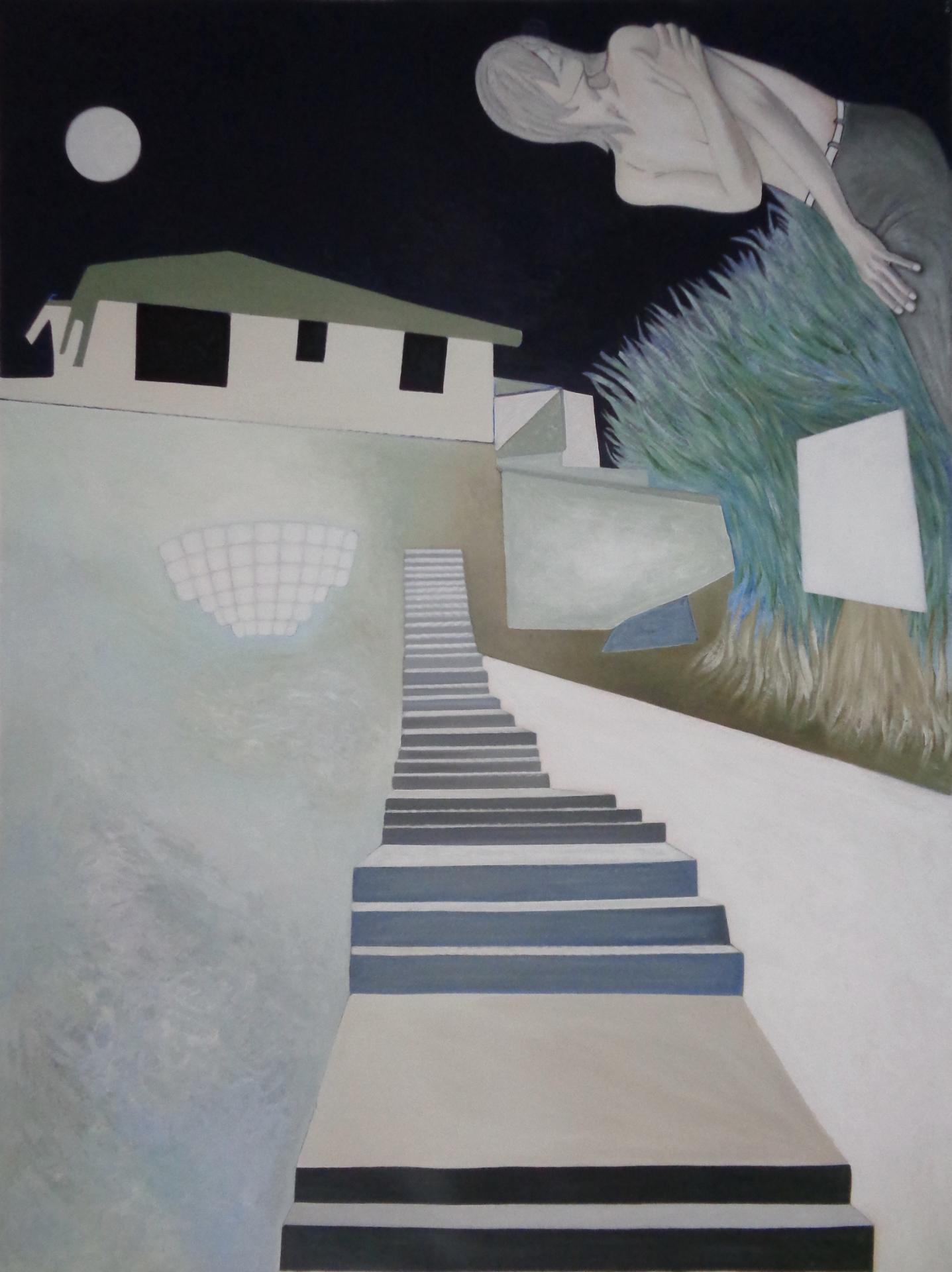
BEFORE DYING

LOST SOUL/MAISON MENTALE
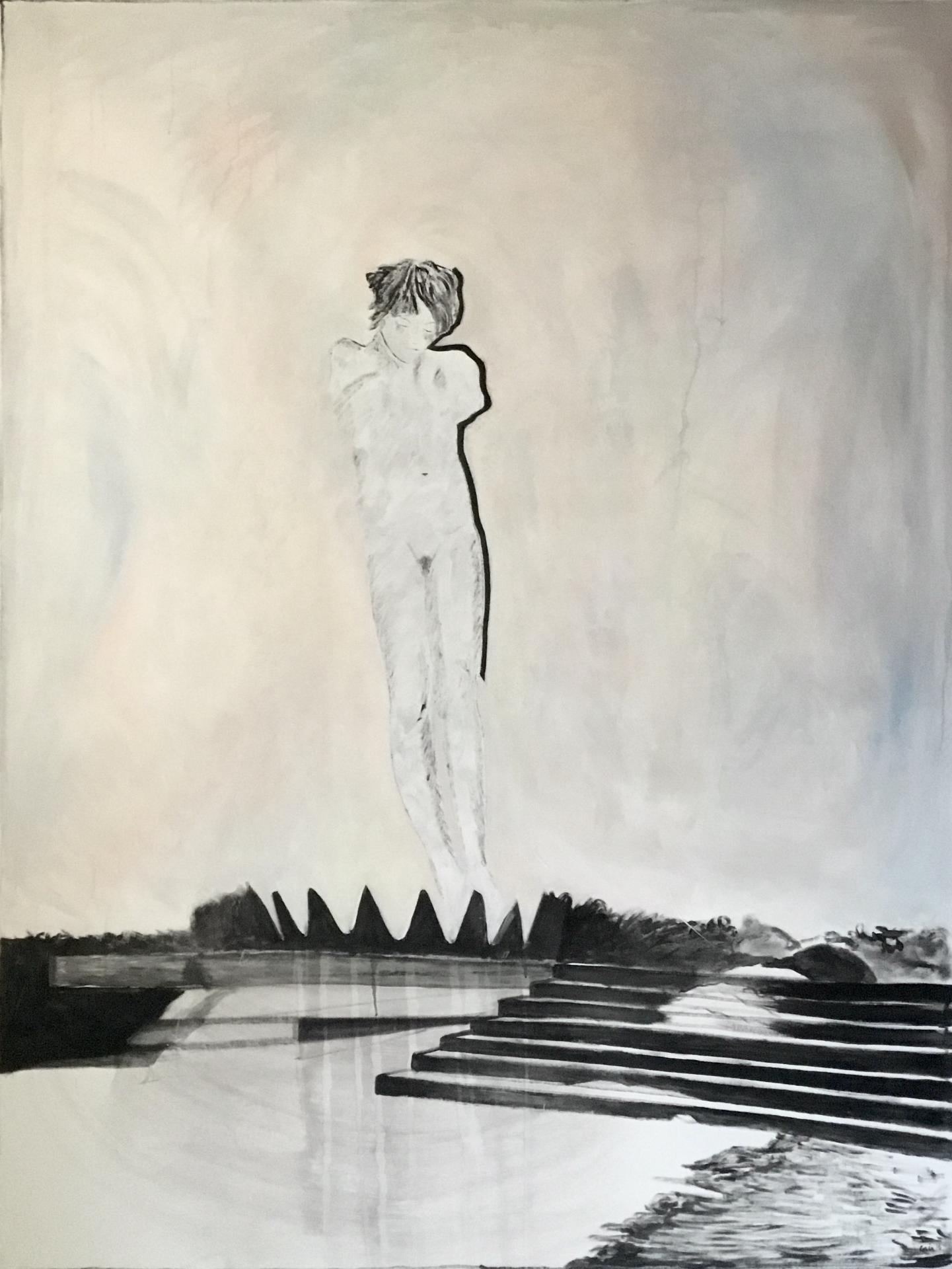
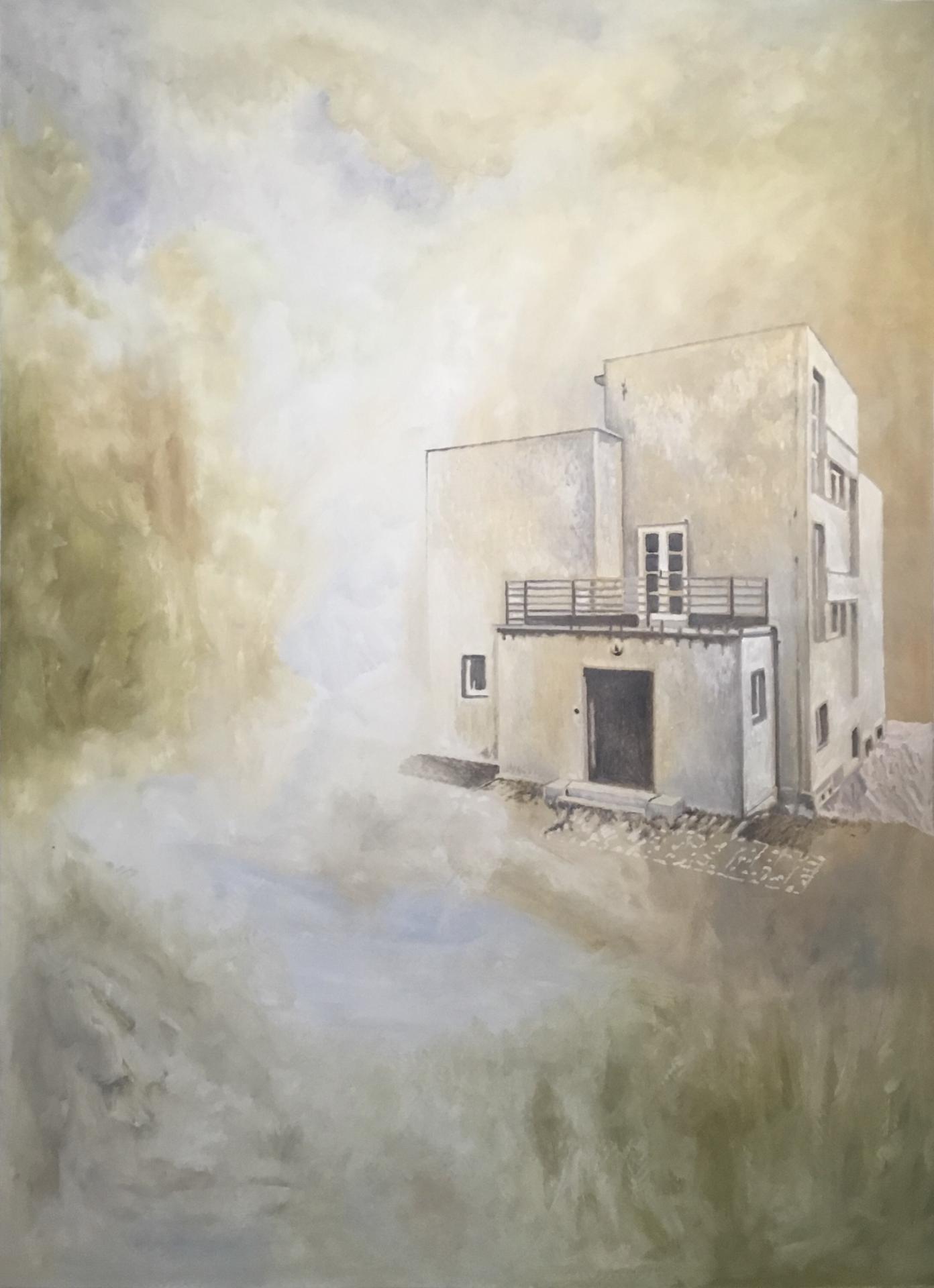
JARDIN MENTAL
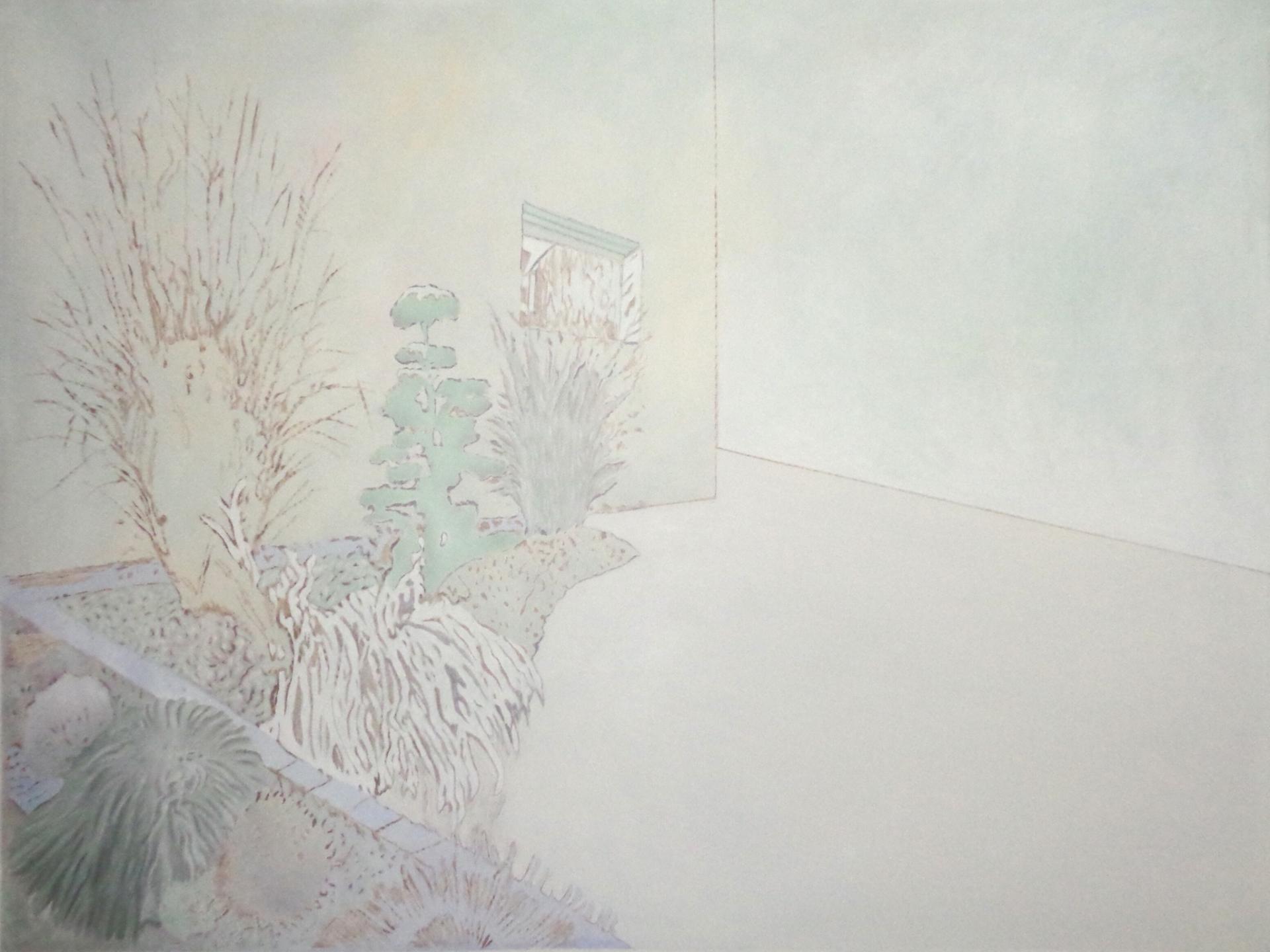
AFTER DEATH
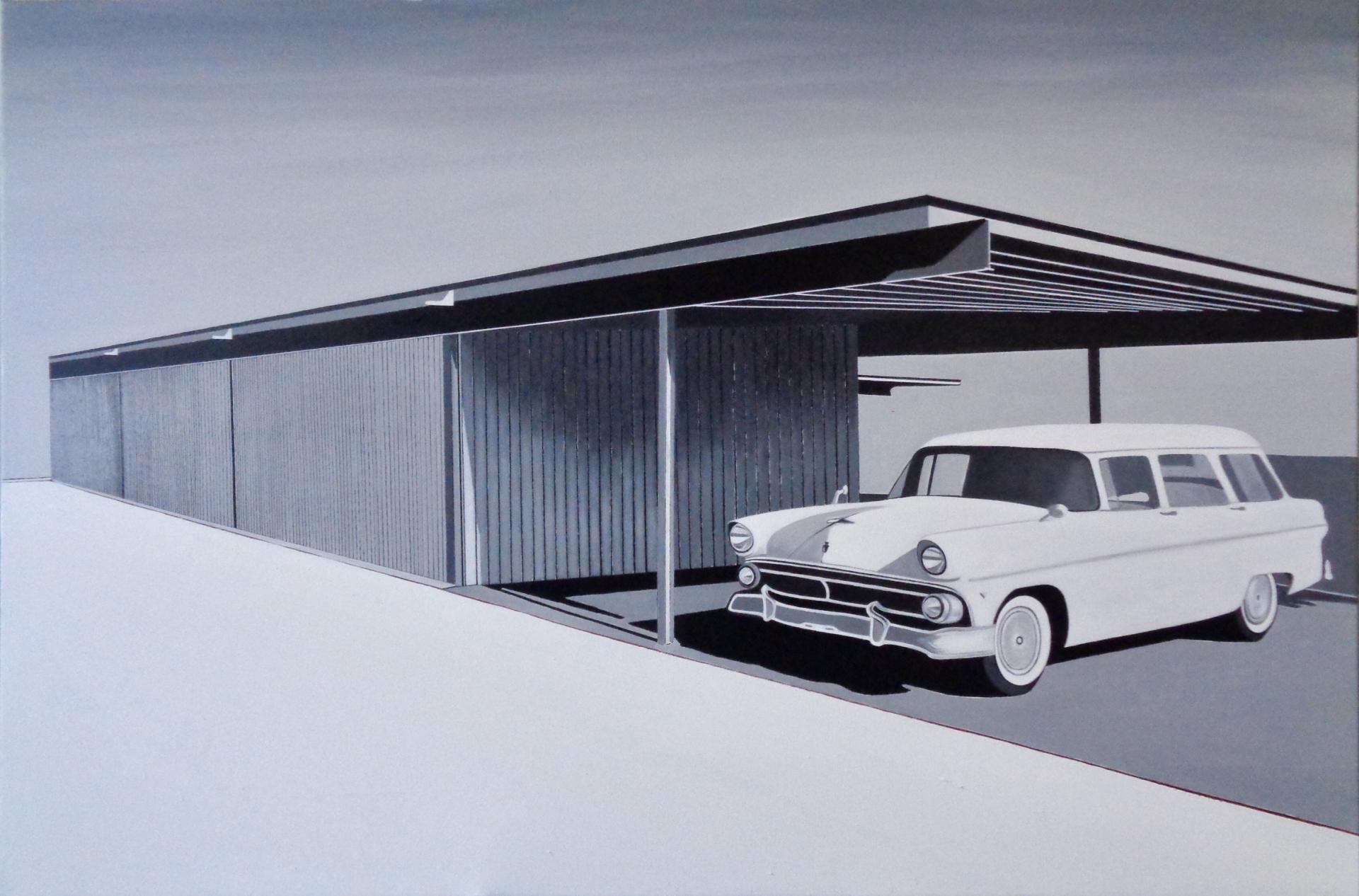
MOTS SUR LA PEINTURE
Le 1er octobre 1976, Raphaëlle Billetdoux publie, aux éditions du Seuil, son roman Prends garde à la douceur des choses. Il s’agit, d’après Wikipédia, d’un vers de Paul-Jean Toulet, extrait du poème En Arles.
Je n’ai pas lu Paul-Jean Toulet, pas plus d’ailleurs que Raphaëlle Billetdoux – sujet ou objet ? laissons ici l’ambiguïté délicieuse déployer ses possibles.
Je vis, en revanche, pour la première fois, il y a quelques mois, la peinture de Corin Vanden Berghe.
Une découverte qui aussitôt appela dans ma mémoire ce vers de ce poème d’un poète inconnu de moi, cité par le titre d’un livre que je n’ai pas lu. Etranges correspondances. Mystérieux signes que s’adressent, à un demi-siècle de distance, des artistes entre eux par le truchement du regard amateur.
L’histoire ne dit pas – du moins pas encore, j’étendrai peut-être un jour mes recherches –, si le titre est venu à la romancière d’une correspondance rimbaldienne entre son patronyme et le vers dont elle nomma son roman…
« Prends garde à la douceur… », m’ont dit mes premières impressions.
Douces, de prime abord, sont en effet les toiles de Corin Vanden Berghe. Vaporeuses, diaphanes, pastel, telles sont les épithètes qui, aussitôt après le titre venu en étendard surmonter l’œuvre, ont surgi.
Quand apparaît, en transparence, ici ou là, comme effacée, la silhouette ou la figure d’un ange, nous voici bien installés dans le piège de la douceur.
Au deuxième regard, pourtant, quelque accroc vient nous déciller. Pour dissiper un malentendu ?
***
Douce est la peau d’ange, ainsi nommée l’étoffe dont la Maison Repetto®, fournisseur officiel de l’Opéra de Paris, fait les justaucorps de ses tutus. Douces les ailes des cygnes, blancs ou noir, du ballet de Tchaïkovski. Douce, on l’imagine, l’aile de cet ange étrangement atterri sur une proéminence de gouttière, à l’aplomb d’un bassin — qui pourrait être douve, tout aussi bien.
Danse, invisible, au coin d’un ciel grisâtre, Maïa Plissetskaïa ; un cygne blanc meurt ; l’ange de Corin Vanden Berghe, tombé du ciel, se tient à l’aplomb d’une chaîne étrange, entre cheminée-gargouille et gouttière-catapulte, d’une maison d’architecte.
Souvenez-vous. Fin des années 80. Le film de Wim Wenders … Les Ailes du désir.
L’ange de Wenders, Bruno Ganz à la ville, depuis le sommet de la Cathédrale de Berlin, plonge un regard perplexe vers les grouillements de l’en-bas humain.
Sont-ils cousins, frères, pères, fils, hommes ou femmes, hommes et femmes, ces envoyés du ciel, venus nous aider, nous secourir, naguère à Berlin chez Wenders, ici à Bruxelles sous le pinceau de Corin Vanden Berghe, partout ailleurs, on suppose ; visibles à ceux seulement qui savent les voir ?
Oui, vraiment prenons garde à ces ailés un peu partout présents-absents dans l’œuvre de Corin.
Celle de la première toile que j’aie vue. A l’abandon, innocente au regard inattentif et peu patient, vous saisit bientôt d’une sensation d’étrangeté inquiétante.
Les ailes de l’ange sont pliées serré, nous n’en voyons qu’une. Et s’il tombait, cet ange, bien mal équipé de son misérable parachute ? Pourrait-il encore les déployer, ces ailes endommagées, dysfonctionnelles, pour échapper à la loi mortelle de la pesanteur ? A la loi dangereuse, funeste parfois, du Désir ? Est-il un ange, vraiment, pas un acteur, ou, pire, un imposteur ? Il a l’air si triste ! Le ciel est si gris, si vide !
« Quand le ciel bas et lourd pèse comme un couvercle
Sur l’esprit ennuyé en proie aux longs ennuis »
Voilà qu’une sorte de spleen baudelairien s’empare de nous. Ah, sur la gauche : un escalier que l’ange peut descendre par degrés, tout simplement, sans devoir se jeter du toit. Nous voilà rassurés !
Est-il tenté, notre ange, par un impossible suicide ? Cherche-t-il, comme le Juif Errant, sa Pandora, pour connaître enfin le repos éternel ? Qu’y a-t-il au bout de cette chaîne, comme une crémaillère accrochée au bord de la gouttière, d’où il pourrait s’élancer, tomber, s’envoler, on ne sait… On ne voit pas bien ce qu’elle soutient cette chaîne, vu qu’elle plonge, comme l’attache d’une ancre marine, vers Dieu sait quelles abysses…
Et puis cette végétation un peu artificielle, tout droit sortie du dessin de l’architecte, cette porte sous l’escalier, dont on ne sait vers quelle cave, quel caveau, ou labyrinthe, quel souterrain elle mène…
Brr, décidément, brr…
Cet ange, voué à nous sauver, serait-il en détresse, lui aussi ? Oh ! En perdition ! vous croyez ? Ne devrions-nous pas, chacun son tour après tout, le choyer nous aussi, s’il est blessé ? Le soigner, lui tenir compagnie s’il se sent seul ? S’il se sent seul quand Dieu s’absente et l’oublie, quand Dieu nous oublie tous et fait peser sur nous le couvercle du ciel gris, bas et lourd. Que savons-nous de sa vie (rêvée ?) d’ange, après tout ? De ses tourments, des soucis que nous lui faisons ? Hein ! Qu’en savons-nous ?
« Nous sommes amputés à l’épaule de l’aile
Plie en ma main ta main tremblante. »
Aragon, Les Chambres, Poème du temps qui ne passe pas.
***
« Que veut la femme ? » demandait Freud. Est-ce à elle que serait dédiée la toile intitulée Illusion de la Mélancolie ? Il n’en paraît rien, on se plaît seulement à l’imaginer. Morceau de galaxie, pièce d’un puzzle cosmique, est-ce du fameux continent noir que vient la fleur bleue, gemme enchâssée dans une monture qu’on dirait de béton armé ? « Je suis fascinée par les trous noirs », me dit Corin en me présentant l’œuvre, à même le plancher de son atelier. Me viennent alors les premiers vers de El Desdichado :
« Je suis le ténébreux, le veuf, l’inconsolé,
Le prince d’aquitaine à la tour abolie.
Ma seule étoile est morte et mon luth constellé
Porte le soleil noir de la mélancolie. »
Un musée imaginaire se construit.
A mesure que défilent ces tableaux, lisses et doux tant qu’à ces jeux de surface et d’apparence nous nous tenons ; tant que nous restons un peu à distance des anges suicidaires, des failles galactiques, des fausses perspectives, des escaliers dont nous ne savons ni où ils mènent ni d’où ils viennent ; tant que nous cédons à la facilité de la surface et du lisse : rien semble-t-il ne nous agrippe et nous pouvons lentement glisser d’une toile à l’autre… Mais attention ! Trou noir !
« En astrophysique, un trou noir est un objet céleste si compact que l'intensité de son champ gravitationnel empêche toute forme de matière ou de rayonnement de s'en échapper. De tels objets ne peuvent ni émettre, ni diffuser la lumière et sont donc noirs, ce qui en astronomie revient à dire qu'ils sont optiquement invisibles. »
Y aurait-il, dans l’imaginaire de Corin, un quelconque non-rapport entre ces anges asexués, assignés à la lumière, et ces cavités noires – du féminin ? – où la lumière justement s’absorbe et se dissipe ?
Onze rubriques définies par le peintre, pour dire son œuvre, en l’état : espace mental, montagne, ange, maison, femme, brutalisme, brutales, végétal, dialogue avec l'ange, intérieurs, non-représentation.
Mieux vaut procéder ainsi que se soumettre au découpage convenu de périodes chronologiques.
L’univers de Corin s’affranchit du temporel, dans des effets proustiens de contiguïté spatiale. Visions surgies d’un rêve dont on ne sait jamais s’il est songe ou cauchemar. Femme désirée tournant le dos. Effigie de l’artiste recroquevillée. Escalators célestes. Autoportrait suburbain, comme une réinterprétation du Gilles de Watteau : même sentiment de tristesse et d’accablement, n’était la figure de l’ange, en arrière-plan… Faudrait-il attendre et atteindre l’au-delà pour y connaître la joie ?
***
Brutalisme et Brutales : vous voyez, sous les pastels séraphiques de l’éther, ces bâtiments de béton, qu’on dit armé ? Ces lignes droites, ces angles vifs ? Force virile sans afféteries. De la main du Grand Architecte ? Prenez garde, nous vous avions prévenus, à la douceur de ces choses que Corin place – pudiquement, au fond ? – à la surface de ses œuvres. Méfiez-vous, disai-je, car vous pourriez, distraction ou mégarde, vous retrouver cul par-dessus tête, comme allongés debout, dans ces bouts de plans à orientations doubles et renversées… Vous pourriez – attention ! Regardez donc un peu où vous mettez les pieds ! – glisser d’une pièce à l’autre et vous retrouver dans un autre espace-temps, quelque part, sait-on où précisément ? Dans ce multivers que dessinent, à travers leurs formules mathématiques, nos physiciens d’aujourd’hui ?
Vous voici enlevés par les Mystérieux Ravisseurs, vous voici perdus, essorés, centrifugés.
Paumés, quoi.
Mais l’ange est là, quelque part, dessiné ou absent. Il veille. Il indique la direction à suivre. Gardien aimable et complaisant, parfois, des musées mentaux dont nous visitons les pièces, paisiblement certaines, d’autres au pas de charge.
« Corin Vanden Berghe ? Aile Nord-ouest. Deuxième étage. Prenez l’escalier roulant, au sous-sol, station L’Origine du monde. Ensuite, demandez au séraphin qui somnole souvent sur sa chaise, il vous dira… »
« Ah, au fait ! Ne vous attardez pas : nous fermons à cinq heures. Sinon, revenez demain… »
« Ce n’est pas l’étage ici »
Aragon, ibid.
***
Sont-ce les œuvres qui défilent devant moi comme des mannequins vivants sur un podium ? Est-ce moi, au contraire, qui parcours les salles dont elles découvrent les murs ? Il y a quelque chose qui vous saisit (main de fer, gant de velours) dans les toiles de Corin. Rien d’insidieux dans cette occupation psychique, même si l’envahissement s’est fait par étapes, à pas de loup. De tout ce que je lis à propos de cette peinture, une opinion commune se dégage : l’œuvre nous interroge. J’ajoute : elle interroge sans violence, mais sans faiblesse. Elle avoue ses désarrois, vient chercher les nôtres. Ses figures comme ses figurations aplatissent un monde pourtant travaillé par l’élévation et la profondeur. Là n’est pas le moindre paradoxe.
Brutalité, douceur. Verticalité, horizontalité. Epaisseur, superficie. De ces antagonismes, Corin tire une œuvre, non seulement singulière, banal de le dire, mais surtout déroutante.
Que dirait le psychanalyste ? Sûrement des bêtises, tant l’interprétation d’un tel travail d’artiste requiert l’expression d’un inconscient qui soit celui du peintre… pas celui de l’analyste.
Et l’esthète ? Que l’œuvre de Corin, sans répudier le beau — facilité servant plus d’une fois d’alibi à la mauvaise peinture — ne sacrifie en rien à la tentation du joli. Pour ce qu’il en est de la douceur, vous savez désormais ce que j’en pense ; et je n’ai pas fini, loin s’en faut, de mâchonner toutes ces nuances du pâlichon, qui, à certains égards, me rappellent des œuvres chinoises, éloge(s) de la fadeur, dont parle si bien François Jullien, philosophe sinologue.
Et puis, je vous aurai prévenus, restez sur vos gardes, vous pourriez vous laisser surprendre !
Voyez ces rouges et ces ocres opiacés d’il y a quelque temps. Ils pourraient bien revenir, comme remonter à la surface… Et ce bleu, tonitruant, de la toile récente, que j’aime à dire nervalienne, Illusion de la mélancolie. Ce bleu d’un buvard central qui attire et absorbe tout. Fleur évanescente ou vénéneuse ? Sexe de femme au-dessus du trou noir qui pourrait, tout aussi bien, se faire continent ? Désir et angoisse : couple maudit dont nous parlent tant ces scaphandriers des profondeurs, que je refuse de faire ici parler, pour laisser à l’artiste, et à lui seul, jouissance de son délire. De sa création. De ses créatures.
***
Parlons peu… la force de l’œuvre est sans esbroufe ; elle vous happe c’est tout. Mine de rien, à petits coups de pinceaux millimétrés pour les fonds et les surfaces : détails en myriades. S’approcher en œil-caméra pour un grossissement du vide, qui, nous le savons, n’est ni néant, ni rien. Mais quelque chose de creux ; trou, anfractuosité dans la roche bétonnée du réel, et le brutalisme de la vie sauf les anges.
Une fourrure mi-soie mi-poils, garnit par ici le rude. Toison opulente et douceur de pierre ponce. Ces maisons hors-les-murs délogent nos désirs. Le féminin est partout insaisissable : pétales, silhouettes, caves et grottes, petit l pour largeur, grand P pour Profondeur... Le masculin, fébrile arpenteur, érige les bâtiments, limite les espaces, petit l pour longueur, grande H pour Hauteur.
Dans Femme maïs, la texture végétale des plants de maïs fait écrin au corps hiératique d’une femme, cariatide post-moderne du ciel bas et lourd : bas toujours ; un peu moins lourd, sans doute, puisque porté ; mais noir, très noir, comme les trous homothétiques de l’Univers sans étoiles de Corin.
La matière n’est jamais volumineuse, le coup de pinceau jamais onctueux. La manière, elle, simple et d’une précision clinique, a l’élégance de ne jamais chercher l’épate. C’est un travail qu’il faut fréquenter, comme les allées d’un labyrinthe, pour y trouver sa voie. Tout est suggéré, rien d’imposé. La douceur elle-même, on l’a vu, n’est qu’une pellicule fine. Il faut aller au-delà des apparences. Peinture de l’ineffable et de l’intangible. Geste allant du brusque au furtif. Œuvre au noir autant qu’œuvre denim au bleu jean, nous n’avons pas fini de nous faire avoir, au détour d’une mosaïque de tons sur tons.
***
Je retourne sur mes pas. Passée trop vite, c’est sûr, dans ce corridor de l’espace-temps, qui va de 2012 à 2022. La peinture de Corin s’y est affirmée dans ses partis pris. Inlassablement, l’artiste a remis l’ouvrage sur le métier : thèmes quasi obsessionnels, qui reviennent, dans cette période, avec davantage encore de force et de profondeur.
Clairière, par exemple, évide la matière en son centre pour n’y montrer que de la lumière. Figure antithétique de celle du trou noir. Nous voici maintenant face à une trouée quasi-blanche d’éblouissement, au milieu de frondaisons japonisantes. Le Gardien de la forêt, sage antique à toge, samouraï ou Merlin l’Enchanteur dans une Brocéliande hallucinée : la lumière toujours, centrale et cernée, découpe le premier plan comme au laser, nous laissant apercevoir, ici, tout près, dans Entre les arbres, ces arrière-mondes où résiderait la source de la pure conscience. Captation en creux de la lumière, par la magie du contraste.
Quant à l’amour…
Parlons-en ! Il se donne à éprouver, chez Corin, entre réalisme figuratif et mystique de l’au-delà. Ventre à dos plus que face à face, il se pratique à deux, entre errances et voyages spatiaux temporels. Entre crudité la plus naturaliste et empilements sensuels, à la Manet ou la Klimt. Ici, la chose est tranquille. Telle Olympia (A peine), se sachant désirable, et désirée, la femme triomphe (My sweet bride). Puis elle se détourne et s’échappe en s’(ex)orbitant (Gravitationnelle). Impudique et fatale, au monde entier elle exhibe, jambes écartées, la forteresse noire, bien gardée, de son mystère au fond des forêts, des gouffres, des grottes. (Dans la forêt).
Qui est ce LoveToy au pays des Merveilles ? Fragment d’un soi du peintre, amputé comme la moitié d’orange à la recherche éperdue de l’autre moitié ? Joueur ou jouet ? Silhouette inattrapable en ombre chinoise. En arrière-plan, diaphane, une femme impériale chevauche. Are we ghosts ? (se) demande le peintre ? Revenons-nous d’un ailleurs, d’un autre part dont nous aurions tout oublié ? Est-ce dans cet inquiétant-rassurant là-bas — autant de l’en-bas que de l’en-haut, chez Corin, grâce aux renversements dont il nous instruit — Est-ce dans ce là-bas que nous retournons ? Que nous en disent les messagers de toutes les douces et agréables nouvelles, nos chers anges de l’Annonciation, des résurrections, et surtout, surtout : des consolations ?
Semblable au centaure de Maurice de Guérin, le peintre s’écri(e)rait, devant sa toile à terminer :
« Et je rôdais, tout agité dans mes ombres. »
(Lost soul)
Plus tard, énigmatique, sentencieux :
« Cependant nous sortons plus tard de nos cavernes
Que vous de vos berceaux »
Je bégaie… Il faut maintenant tituber, car c’est d’une quête à la destinée incertaine qu’il s’agit…
« Rien ne m’est sûr que la chose incertaine », déplorait Villon.
Je trébuche et me raccroche ici à une forêt pubienne, là aux ailes désexuées du désir, plus loin encore à cette frontière franchissable, et, qui sait ? réversible ? de la mort. De ce côté-ci le transport ultime, à coup de revolver, dans Before dying. Extase aussi exquise que fatale. De ce côté-là, ravissement post mortem sur les ailes de l’ange ?
L’amour, oui, d’accord, mais comme beuglait Artaud :
« Et l’amour ? Il faut nous laver
De cette crasse héréditaire
Où notre vermine stellaire
Continue à se prélasser »
Nous cherchons des sources, dans la peinture de Corin, autres que de lumière parmi les noirceurs de l’existence.
Un peu d’eau parfois, dans ces déserts de l’âme qu’il nous faut traverser ? Nous brûler d’abord, de sécheresse plus que de feu, puis nous abreuver… Mourir le désir. Un Niagara sexuel, de sperme ou de cyprine, irrigant les roches blessantes sur quoi les esquifs de nos vies se déchirent…
Nous baigner…
Bains de lumière sans astre, coulées de lave au lieu de l’eau des fontaines… Boire alors ? Oui, mais où ? Le lac est gelé (Lac gelé). Ah, de l’eau enfin, nous allions mourir de soif, bien plus que de désir. Nous devions boire et nous laver … Canopée aquatique, puis Jardin mental. Est-ce d’un baptême trans qu’il s’agit ? Tout baptême ne l’est-il pas, trans ? Puisqu’il y faut vaquer d’un espace (mental) à un autre, d’un état (de conscience) à un autre, du concave au convexe, du revers à l’avers, de l’ombre à la lumière, du féminin au masculin, de la vie vieille à la vie neuve. Et vice-versa.
C’est à ces renversements subtils que l’œuvre à l’œuvre de Corin Vanden Berghe nous entraîne. Poétiquement, lumineusement, sombrement, géométriquement, infiniment. Passé, bien sûr, les premières portes de la perception erronée du lisse, du fragile et du pâlot. Passé, donc, le piège plus initial qu’initiatique, de la douceur.
Marquons une pause en attendant la suite, attardons-nous un instant sur cette Mona Lisa transgenre. Ramassement de synthèse, en trompe l’œil et clin d’œil. Tout n’y est peut-être pas, mais beaucoup s’y trouve : la structuration du plan, l’empilement, le fond paysage, méticuleux, onirique et trans-lucide ; la face énigmatique de… qui, au fait ? L’ange, le peintre, une entité céleste, une réminiscence de buste romain ? Grec ? Au sfumato de Leonard, Corin substitue sa propre technique. Aboutie, exigeante — et si ingrate ! Oui, ingrate, puisqu’elle s’adresse à nous autres, du vingt-et-unième siècle : inattentifs, distraits, ni voyants ni clairs; tout juste un peu clercs, c’est tout.
Mais l’artiste ne tient-t-il pas d’ores et déjà sa vengeance ? Ne sommes-nous pas, vous et moi, ces mêmes et différents, déjà trans, passés de passants pressés à piétons flâneurs ?
Nous qui maintenant guettons, fiévreux, nos prochains transbordements, dans l’univers d’un peintre aujourd’hui en pure conscience, maître des sortilèges.
Bruxelles, 12 décembre 2022.
Hay de Talbe.